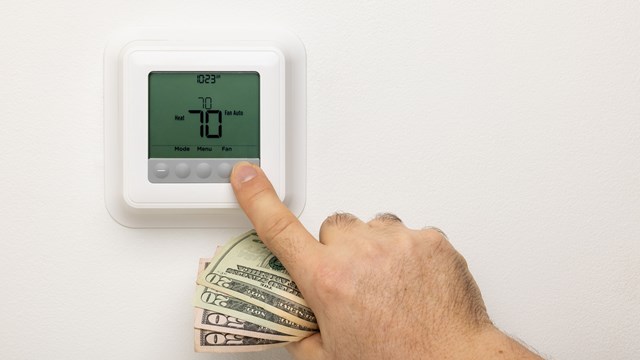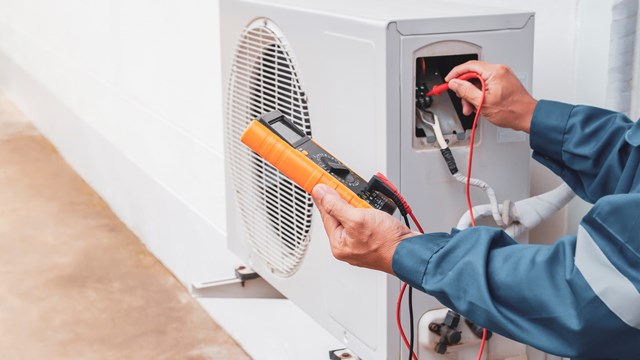
If phones can be “smart,” why not buildings? With the ever-expanding array of consumer technology available today, it should come as no surprise that residential buildings are incorporating more and more cutting-edge technology into their communications, security, and operations systems than ever before, and unifying building operating systems so they can be monitored and run from a central location by a building staff member, or by residents themselves with smartphones and iPads. Many of these innovative systems are being installed from square one in new construction, but also in the form of upgrades and retrofits in older buildings. Let’s take a look at the state of the industry.
When considering smart buildings, the key word is integration. But what does that mean exactly?
Automation
“Integration in general is a very broad term, which can be used to describe systems that are (a) just minimally aware of each other—and even systems that are aware of each other only as a result of manual effort,” says Jerry Kestenbaum, the president of BuildingLink, a Long Island City-based company that puts co-op and condo buildings online and gives residents access to all kinds of information, “or are (b) fully aware and communicating bi-directionally and in a way that enhances each system’s ability to behave better and smarter. In any building at all, system integration makes the mechanical, electrical and energy operations of a building flow more smoothly and efficiently.”
Generally speaking, commercial buildings are more likely to be state-of-the-art with respect to systems integration, while residential buildings tend to be behind the curve. This is changing, however, as more and more boards are finding wisdom in investing in the new technology. At first blush, it would seem that the needs of both kinds of buildings are the same, but residential buildings have different needs.
Wide Range of Services
“The range of services provided to its occupants tends to be broader,” Kestenbaum says, “and its occupants make use of its services 24/7. Therefore, the more integrated a system is the better it will enable staff to accomplish its mission.”
One example: security. “The security needs of a residential building are much more diverse,” he explains, “in that they include key holding, security monitoring of common areas such as garage and laundry areas, access control monitoring of a range of different types of people with different access control needs even when apartments are unattended (babysitters, dog walkers, contractors doing renovations, food delivery, family members) as well as areas with special access control rules”—for example, no minors in the fitness room.
“Intelligent buildings typically tie together multiple, disparate systems,” says Rawlson King, communications director of the Continental Automated Buildings Association, a 20-year-old international industry association, composed of about 350 corporate members, dedicated to the advancement of intelligent home and intelligent building technologies. “In fact, it can be argued that intelligent buildings transcend integration to achieve interaction so that previously independent systems work collectively to optimize building performance, including monitoring comfort levels, security systems, energy systems and operations.”
Intelligent Buildings
Integration and interaction are what drive intelligent buildings. But what does that mean, and how does it work? “Building automation systems and building energy management systems”—BAS and BEMS, respectively—“are designed to provide centralized oversight and remote control over heating, ventilation and air conditioning (HVAC) systems, lighting and other building systems,” King explains. “In simple terms, a BAS is a programmed, computerized network of electronic devices that are employed for control and monitoring of systems. It primarily aims at optimizing the performance, start-up and maintenance of systems and greatly reduces the interaction of mechanical subsystems in a building. BEMS basically performs the same functions as a BAS but varies more in capability and functionality.”
These systems carry out a host of functions, King says, including optimization of stop-and-start systems, maintenance scheduling, alarm generation, and constant monitoring of the whole integrated system.
“The origin of system integration or interfacing started with fire systems triggering reactions from other related building systems; HVAC, access control, elevators, etc.,” explains Jim Sinopoli, managing principal of Smart Buildings LLC. “Today system integration includes all of the control systems in a building, but also encompasses facility management systems, business systems, and eventually utility grids.”
“Traditionally, building systems had been characterized by highly proprietary offerings with limited ability to inter-operate,” King says. “As an example, in the 1950s, control over a commercial building's lighting systems and heating and air conditioning would have been separate functions, probably maintained by separate personnel. With the advent of computer systems being integrated into buildings in the late 1980s and early 1990s, such building systems could be centrally controlled”—that is, integrated.
Centralization of Systems
Once that was achieved, the technology flourished. “With the advent of open networking and the Internet, now systems can be controlled remotely, and building operations across a whole building portfolio can be centralized in one regional control center,” King says.
Of course, just because something is possible doesn’t mean everyone is doing it; contrary to popular belief, not everyone tweets or is on Facebook. “Some buildings have adopted only the barest of minimums of technology innovation, often when older systems have failed and have been replaced with new equipment, like current smarter boiler controls, elevator controls, or to meet bare-bones security needs—like having one or more video cameras displaying or recording a service alleyway or a laundry room area,” Kestenbaum says. “Others have begun to adopt somewhat more advanced technology with better access control, smarter HVAC systems using better predictive algorithms for heating and cooling, and adopting comprehensive communications-event-data tracking systems like BuildingLink that use the Internet for advanced communications and security event logging and notification.”
Of particular interest to residential buildings, with their multiple entries (front door, laundry, common rooms, roof, etc), is what Kestenbaum calls “key security—meeting the challenge of keeping emergency copies of owners’ apartment keys in a totally secure environment (so as to prevent employee theft or other unauthorized access) while at the same time providing quick emergency access 24/7.” This is a relatively new option, he explains. “Twenty years ago, there was no system at all for this, and now there are two: Keytrack and KeyLink. These are highly sophisticated lockbox biometrically-operated systems, uniquely used by residential high-rise buildings, auto-dealerships, and the U.S. military in Iraq.”
Despite the obvious benefits of these key systems, they have not taken the world by storm. “Maybe 20 percent of buildings with 100 or more units have one or another of these high-tech key security systems,” Kestenbaum says. “The other 80 percent either have keys locked up someplace in a super’s office, or sitting in a jumble of boxes and marked envelopes at the front desk.”
As Sinopoli points out, “the idea of integration automation is driven by the owner”—that is, the board and the residents. If there is no push to update the systems—or, in new construction, implement them correctly—the technology is useless.
What Does it Cost?
The systems do cost money, but they are not prohibitively expensive by any means—especially when considering the energy savings. For example, the BuildingLink integrated operations platform can be installed and be up and running in a week if needed,” Kestenbaum says, “and typically would cost a 150-unit building around $4,000 per year.”
But costs do not have to be expensive. For a minimal expense, a company called Vivint, (www.vivint.com) based in Provo, Utah and with offices nationwide, offers home automation systems for a few hundred dollars that homeowners can install. Homeowners can receive alerts on their BlackBerry or iPhones, for example, if their garage door was left open or their thermostat was too high when they were on vacation or away for the day. For a $200 activation fee and a service fee of approximately $70 a month, remotely from an iPad or smartphone device, a homeowner can lock their doors, turn off lights, control heating or cooling or connect to a dozen or more technologies powering their home. Energy management modules cost $200 for installation and $57.99 a month, and basic home security modules run around $200 for installation and $49.99 a month, according to Staley White, a public relations spokesperson for Vivint. The company can also create a customized package for homeowners allowing them to remotely control appliances like coffee pots and lamps and monitor security such as door locks and key fobs. A motion detector can also be installed to alert the homeowner when unexpected activity occurs.
For all the benefits in the area of security, it is in conserving energy that intelligent buildings really derive value from their intelligence. Fact: commercial and residential buildings consume about one-third of the world's energy.
“If current trends continue, by 2025, buildings worldwide will be the largest consumers of global energy, using as much power as the transportation and industrial sectors combined,” says King. “Recent studies have found that improving energy efficiency in buildings is the least costly way to reduce a large quantity of carbon emissions. By changing energy management practices and instituting technologies that enhance energy efficiency, building owners and managers can reduce energy consumption by up to 35 percent.”
Is a 35 percent reduction in energy costs worth the $4,000-a-year bill? Maybe. And this is the wave of the future. More and more buildings will be upgrading.
“In an era of volatile energy prices and increasing concern over climate change, the need for the innovative application of technology has become highly acute,” says King. “Buildings with integrated intelligent building technologies can save thousands and even millions of dollars in energy by delivering heating, cooling and lighting more efficiency. Intelligent buildings are increasingly using solar walls to capture energy from the sun, ventilation systems to recapture and reuse heat, insulation strategies that enable better climate control, high-efficiency lighting systems that enhance illumination with less electricity and automatic systems that control building services based on activity.”
Kestenbaum agrees. “The LEED pioneers indicate that it definitely does save money, and depending on the areas targeted, the payoff can be longer or sooner. As costs come down, the payback period will become shorter and a greater number of types of ‘smart’ integration undertakings will make sense.”
Greg Olear is a freelance writer and a frequent contributor to The Cooperator.









Leave a Comment